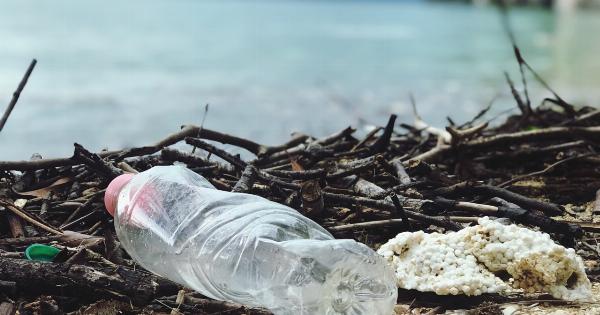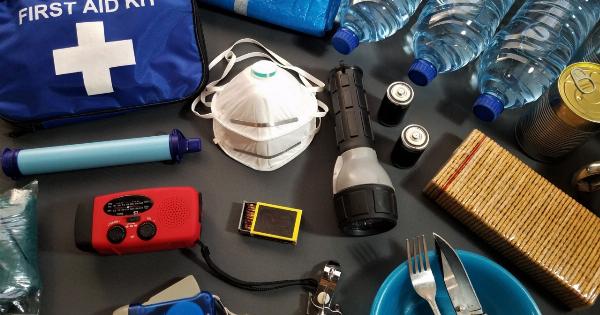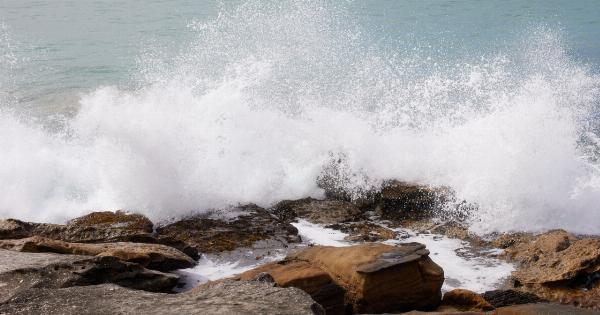In recent years, there has been a growing concern about the impact of microplastics on our environment and our health.
Microplastics are small plastic particles that are less than 5mm in size, and they are virtually everywhere – from the air we breathe to the water we drink and the food we eat. These tiny particles are not only a threat to marine life but also pose a significant risk to human health.
What Are Microplastics?
Microplastics can come from a variety of sources.
They can be the result of the breakdown of larger plastic debris, such as water bottles or packaging materials, or they can be intentionally manufactured for use in consumer products like facial cleansers or toothpaste. Microplastics can also be generated by the erosion of larger plastic products, such as car tires or synthetic clothing fibers, which release countless tiny particles into the environment.
The Ubiquity of Microplastics
Microplastics can be found in almost every corner of the planet. They have been detected in the remote Arctic regions, in the depths of the ocean, and even in the air we breathe in urban areas.
These particles have become so ubiquitous that it’s almost impossible to escape exposure to them.
One major source of microplastics in the ocean is the breakdown of larger plastic items through a process called fragmentation.
As larger plastic debris enters the water, it gradually breaks down into smaller and smaller pieces due to the effects of sunlight, wind, and wave action. Over time, these fragments become small enough to be classified as microplastics.
The other major source of microplastic pollution is microbeads, which are tiny plastic particles intentionally added to personal care and cosmetic products.
These microbeads are often too small to be captured by wastewater treatment plants and end up being discharged into the environment. They can be found in rivers, lakes, and oceans, where they are ingested by marine life and eventually make their way up the food chain.
The Impact on Marine Life
Microplastics pose a grave threat to marine life. The ingestion of these tiny particles can lead to physical harm, such as blockage or perforation of the digestive tract, as well as internal injuries.
The particles can also leach toxic chemicals and pollutants, which can adversely affect the health and reproductive success of marine organisms.
Filter-feeding organisms, such as mussels, oysters, and certain species of fish, are particularly vulnerable to microplastic ingestion. These organisms passively filter large volumes of water, trapping small particles along with their food.
As a result, they accumulate high concentrations of microplastics in their tissues.
Once microplastics enter the ocean, they can persist for hundreds or even thousands of years, continuing to pose a threat to marine life.
As larger organisms, like fish or marine mammals, consume smaller organisms containing microplastics, the particles accumulate and become more concentrated in their bodies. This process, known as biomagnification, can lead to the transfer of microplastics through the food chain, ultimately reaching humans who consume seafood.
The Silent Ingestion
While the impact of microplastics on marine life is increasingly recognized and studied, their effect on human health is not yet fully understood.
However, emerging research suggests that the silent ingestion of microplastics may have grave consequences for our well-being.
In a recent study, scientists found microplastics in various food and beverage products, including salt, honey, and even bottled water.
These findings have raised concerns about the extent of our exposure to microplastics through the consumption of everyday items.
Once ingested, microplastics can interact with our digestive system, potentially causing inflammation and impairing nutrient absorption.
The particles have also been found to leach toxic chemicals, such as phthalates and bisphenol A (BPA), which have been linked to a range of health issues, including hormonal disruption and developmental disorders.
Microplastics in the Air
As alarming as it may sound, microplastics are not only present in the water and the food we consume but also in the air we breathe.
Recent studies have detected microplastic fibers and particles in atmospheric samples from urban areas as well as remote locations, suggesting that airborne microplastics have become a global concern.
There are several potential sources of airborne microplastics, including the fragmentation of larger plastic debris, the release of microplastics from synthetic clothing during laundry, and the wear and tear of car tires on roads.
These tiny particles can be carried by wind currents and inhaled by humans, potentially posing risks to respiratory health.
The Need for Action
The issue of microplastics requires urgent attention and action.
Efforts are being made to reduce the release of microplastics into the environment, such as banning the use of microbeads in personal care products and implementing stricter regulations on plastic waste management. However, more needs to be done to tackle this complex problem.
Investing in research is crucial to gain a deeper understanding of the sources, distribution, and potential impacts of microplastics.
This knowledge can help inform policy decisions and develop effective strategies to minimize the release of microplastics and mitigate their impact on both the environment and human health.
Individuals can also play a part in reducing microplastic pollution.
By making conscious consumer choices, such as avoiding single-use plastics and purchasing products that are sustainably made, we can collectively contribute to a cleaner and healthier future for our planet.
Conclusion
The silent ingestion of microplastics is a pressing issue that demands immediate attention. These tiny particles, which are pervasive in our environment, pose a significant threat to marine life and potentially to human health.
The ubiquity of microplastics in our air, water, and food highlights the urgent need for action to reduce their release and mitigate their impact. By raising awareness and taking proactive steps, we can work towards a future where microplastics no longer silently infiltrate our ecosystem.






























